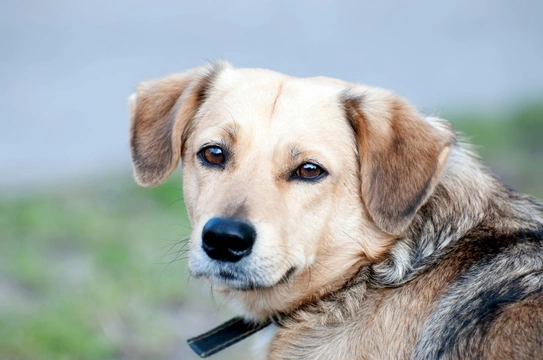
Age-related retinal degeneration in dogs
There are a significant amount of different problems and disorders that can affect the eyes of the dog, from hereditary issues that are prevalent within certain breeds, to cataract formation, to issues that arise due to an incident or injury.
As dogs age and their bodies begin the gradual shutdown process towards the end of their lives, eye problems and loss of vision are among the most common problems that can occur, and again, these can come in various different formats. One of the most common age-related problems of the eyes in the dog is the degeneration of the macula, which is part of the retina, the area of the eye that is responsible for transmitting the images that the dog sees to their brain for processing.
This is known as macular degeneration, which is almost exclusively seen in older dogs, and can lead to a gradual loss of their visual acuity. In this article, we will look at age-related retinal degeneration and macular degeneration in the dog, and what it means for them. Read on to learn more.
What does the retina of the dog do?
The retina is the part of the eye that functions as a “camera” to receive visual input from the optics. The retina then passes data about the images that it receives to the brain, where it is processed into the dog’s picture of the world around them.
The macula itself is part of the retina, and is responsible for the high acuity aspects of vision, and is rich in photo-receptive cones that process light. Damage to the macula or degeneration of the macula over time will lead to a loss of the dog’s central vision, meaning that they will lose the ability to clearly view objects that are right in front of them, leaving only peripheral vision to rely upon.
What is macular degeneration?
Macular degeneration is the term used to refer to a gradual and progressive destruction of the macula itself, which sometimes presents as a physical hole developing within the macula. This hole is most widely caused by degeneration rather than an accident, but in rare cases, physical damage to the eye can serve to burst the blood vessels of the eye, causing a hole to form.
What sort of dogs are at risk?
Whilst macular degeneration can occur in younger dogs, it is almost exclusively a condition of old age, and is very unlikely to present in dogs below the age of seven, with dogs over ten being at the greatest risk.
The precise causes of macular degeneration in the dog are not definitively known, but there is thought to be a hereditary element to it, and as such, the condition is more common among certain breeds and types of dogs than others, including the Briard and the Siberian Husky.
Interestingly, there is some limited evidence that certain lifestyle factors can increase the risks of macular degeneration in dogs too, including prolonged exposure to bright sunlight, and obesity.
How can I identify it?
It is important to be vigilant about monitoring your dog’s vision and general optical health once they start to get older, as eye problems of various kinds are very common in dogs in old age. Due to the fact that so many potential problems can affect the eyes of elderly dogs and of course, they share many common symptoms, it can be hard to definitively identify macular degeneration as opposed to a different problem, but some of the main symptoms of the condition include:
- Loss of the central vision, which causes the dog to rely upon their peripheral vision and appear to be constantly turning their heads in order to focus on a static object.
- Inability to spot objects directly in front of them.
- Unwillingness or reluctance to go up and down stairs or cross kerbs and other small obstacles, due to a loss of depth perception.
- Accidents and bumps due to misjudging distances and depth.
- Reluctance to go outside in bright light, including squinting or other indications of sensitivity to light.
Can anything be done for affected dogs?
Unfortunately, degeneration of the macular part of the retina in dogs cannot be treated or reversed, and ultimately over time this can lead to total blindness, assuming that the dog is otherwise in good health and lives long enough for this to happen. However, dogs that lose their vision gradually usually learn to cope with this very well, and will compensate for their vision loss with their other senses.
There are of course some special considerations to bear in mind when it comes to taking care of a blind dog, which are covered in more detail within this article.
It is important to get your dog’s retinal degeneration formally diagnosed by your vet nonetheless, as your vet will need to rule out all of the other potential causes for your dog’s loss of vision first, as some of these may be treatable.



